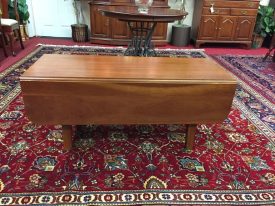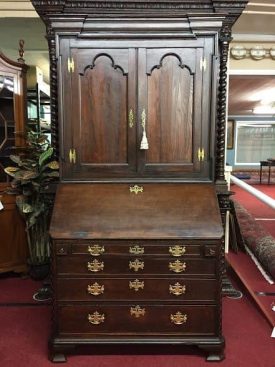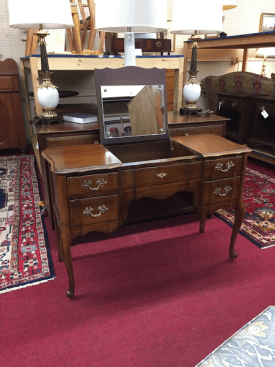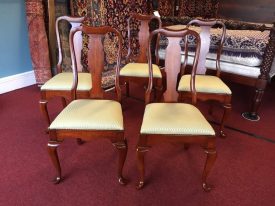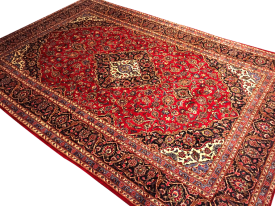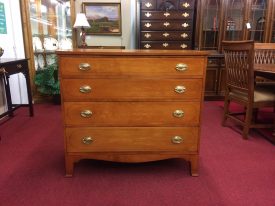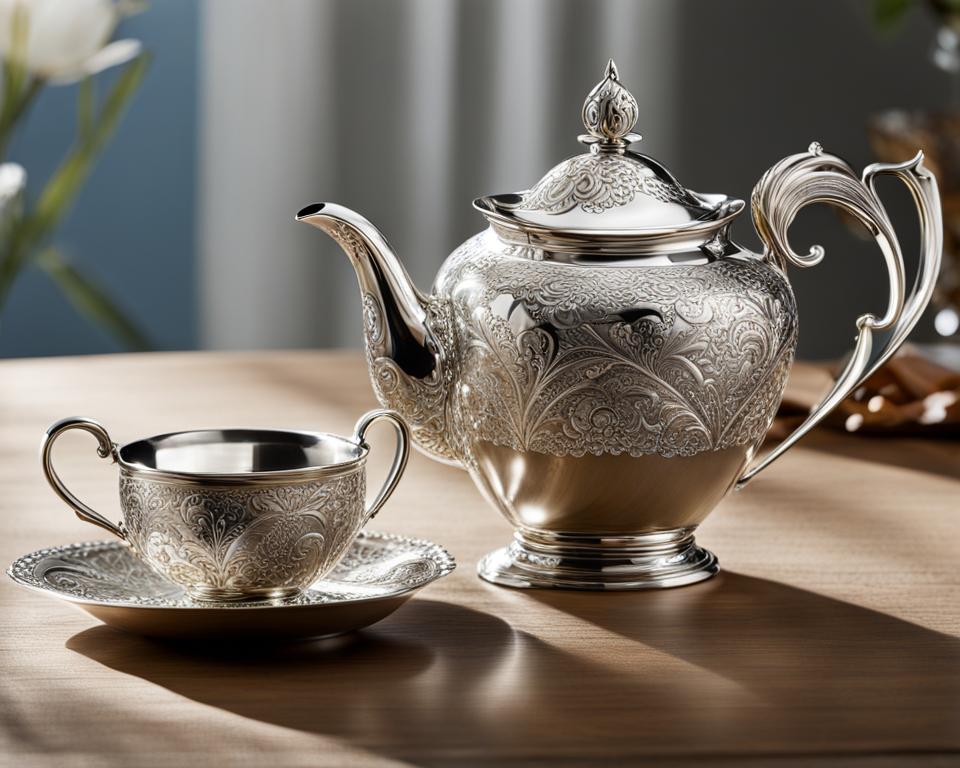The journey to ensuring the longevity and beauty of your home’s furniture shouldn’t be a chore shrouded in complexity. Whether it’s a beloved set of leather armchairs or the family’s favorite wooden dining table, mastering a few furniture cleaning tips and incorporating the best practices for furniture care can keep every piece inviting and intact. This furniture maintenance guide will arm homeowners with the necessary knowledge to tailor their approach to various furniture types. Let’s demystify the process of preserving your cherished items, equipping you with the strategies needed to combat daily wear and maintain their allure over time.
Key Takeaways
- Develop a tailored cleaning routine for each furniture type to ensure materials are properly maintained.
- Incorporate regular dusting and vacuuming into furniture care habits to prevent buildup of debris.
- Learn how to treat stains and spills promptly to minimize lasting damage and maintain aesthetics.
- Understand the importance of using the correct cleaning products to preserve furniture materials.
- Establish a furniture care schedule that includes both immediate cleaning tasks and long-term maintenance strategies.
- Adapt your furniture cleaning techniques to address the unique challenges posed by different seasons.
Understanding Furniture Care Fundamentals
Embarking on a furniture care journey starts with recognizing that every material, from the supple grain of leather to the soft weave of velvet, has specific cleaning demands. This section offers a deep dive into the fundamental principles of furniture care instructions, ensuring you have the necessary know-how to preserve the life and beauty of your varied furnishings.
Assessing Furniture Material and Construction
Identifying your furniture’s material is the first step towards implementing tips for cleaning different types of furniture safely and effectively. Each material, whether it’s the organic warmth of wood or the refined touch of velvet, has its own set of care instructions. Gaining insight into the construction and materials of your pieces is essential for maintaining their original appeal and functionality.
Avoiding Common Cleaning Mishaps
Avoid pitfalls in furniture care by sidestepping common cleaning blunders. A splash of water on a wooden surface can cause irreversible warping, whereas aggressive brushing can ruin velvet’s delicate fibres. By understanding the unique cleaning requirements of each material, you can preserve the integrity and appearance of your furniture.
Regular Maintenance for Longevity
To ensure your furniture stands the test of time, commit to a consistent maintenance routine. Simple acts, such as regular dusting, appropriate conditioning, and timely stain removal, go a long way. Here, we outline regular upkeep tasks tailored for different types of furniture to make upkeep manageable and effective.
| Material | Cleaning Tips | Maintenance Tips |
|---|---|---|
| Wood | Use gentle, pH-neutral cleaners | Polish with beeswax for natural shine |
| Upholstery | Vacuum with upholstery attachment | Clean spills immediately to prevent stains |
| Leather | Wipe with a damp cloth; avoid soaking | Condition regularly to prevent cracking |
| Velvet | Blot stains; don’t rub to avoid texture damage | Use a soft brush to maintain texture |
How do you properly clean and maintain different types of furniture?
When it comes to preserving the form and function of your furniture, integrating furniture cleaning tips into your regular home care routine can make all the difference. Whether tackling tough stains on a comfy upholstered chair or ensuring that your cherished wood table retains its sheen, understanding the nuances of tips for cleaning different types of furniture is key. Each material requires its own approach, with some necessitating a gentle touch and others demanding more rigorous cleaning methods.
- For Solid Wood: Employ a soft cloth and mild cleaners that don’t strip the natural oils. Wax-based polishes offer both shine and a protective layer.
- On Upholstery: Vacuum regularly with appropriate attachments and address spills quickly to avoid lasting damage. Spot-clean with suitable fabric solutions.
- Leather Surfaces: Require frequent dusting and conditioning treatments to stave off cracking and dryness. Wiping spills promptly is essential to prevent stains.
- Metal Features: Mild soapy water will suffice, but be sure to dry thoroughly to prevent rust. For outdoor metal furniture, rust-resistant coatings are beneficial.
The key to successful furniture maintenance is not just in the cleaning itself, but also in the regularity and attention to detail. Below is a guide to different materials and their ideal cleaning frequencies and methods.
| Material | Cleaning Method | Frequency | Pro Tips |
|---|---|---|---|
| Leather | Soft cloth, leather cleaner, and conditioning | Every 3-6 months | Test cleaners in an inconspicuous spot |
| Velvet | Soft-bristle brush, vacuum cleaner | Weekly | Use a steamer to lift fibers and avoid water |
| Wood | Microfiber cloth, wood-friendly polish | Bi-weekly to Monthly | Always dust in the direction of the wood grain |
| Metal | Mild detergent, soft cloth, clear water rinse | As needed | Keep metal furniture dry to avoid rust |
| Glass | Microfiber cloth, vinegar-water solution | Weekly | Avoid abrasive cleaners that can scratch the surface |
Remember, each piece of furniture in your home adds character and comfort to your living spaces. By following these furniture cleaning tips, you can ensure that every item—from the sturdiest bookcase to the most delicate lampshade—remains in top condition for years to come.
Maintaining and Cleaning Wood Furniture
Wooden furniture brings warmth and classic style to any space, yet it demands thoughtful care to endure the trials of time and use. Be it an imposing oak dining table or a whimsical maple bookcase, each piece wishes to be handled with care and knowledge, so it may continue to tell its story for generations to come.
Choosing Suitable Cleaning Products
When selecting cleaning products for your wood furniture, it’s all about balance. Harsh chemicals can damage wood’s natural fibers, while gentler options preserve its integrity and sheen. Seek out cleaners that are pH-neutral, specifically formulated for wood, and remember that sometimes, a simple solution of water and mild dish soap can be just as effective.
Techniques for Dusting and Polishing
The art of dusting and polishing wood furniture cannot be underestimated. Frequent dusting with a soft, non-abrasive cloth can prevent microscopic scratches, keeping surfaces glossy and smooth. For polishing, choose products based on natural oils, which nourish the wood and provide a luscious finish that highlights the grain. A rule of thumb is to polish only a few times a year to avoid buildup—moderation is key.
Addressing Spills and Stains on Wood
Accidents happen, but they needn’t leave a permanent mark. If you tackle spills swiftly with a dry cloth and follow up with a cleaner attuned to the wood’s finish, you can bypass many a lasting stain. For those incursive water rings or pesky ancient marks, consider a diluted soap solution, applied with the grain, and finished with a quick buff for good measure.
| Issue | Solution | Preventive Measures |
|---|---|---|
| Dust and Dirt | Soft microfiber cloth | Regular dusting schedule |
| Water Rings/Stains | Mild soap solution and wood-grain scrubbing | Use of coasters and immediate drying of spills |
| Scratches | Matching wood marker or walnut rubbing | Use of mats, pads, and trivets to avoid direct contact with sharp objects |
| Discoloration | Polish infused with color-enhancing agents | Regular treatment and avoidance of direct sunlight |
Remember: The best strategy in maintaining cleaning wood furniture is a blend of careful cleaning, diligent maintenance, and adherence to furniture care instructions. These practices help retain the beauty and function of wood furniture for the years ahead.
Best Practices for Upholstered Furniture Care
Caring for upholstered furniture is vital to sustaining the life and beauty of one of the most utilized items in your home. Whether your upholstered pieces are gathering spots for family, a resting place for pets, or a cozy reading nook, these tips ensure they stay fresh and welcoming.
Vacuuming Techniques for Fabric
Regular vacuuming is key to removing dust, allergens, and pet hair from your upholstered furnishings. Effective vacuuming involves using the appropriate attachments—a crevice tool to reach into folds and a brush attachment to gently lift dirt and debris from the fabric surface. For best results, vacuum at least once a week and utilize a vacuum with strong suction and HEPA filters to contain the fine particles.
Spot Cleaning and Stain Prevention
When spills happen, time is of the essence. Blotting the spill with a clean microfiber cloth can prevent the liquid from seeping deeper into the fabric. For a DIY cleaning solution, mix a small amount of mild dish soap with water or use a blend of vinegar and water for tougher stains. Apply the solution sparingly and dab gently instead of rubbing, which can work the stain further into the material. For maintenance, consider rotating cushions regularly to ensure even wear and selecting synthetic fabrics for areas with heavy use, which can be more resistant to stains and easier to clean.
In addition to routine care at home, calling in professionals for a deeper clean may be beneficial once a year or when challenging stains persist. Their expertise can refresh and revive your furnishings, keeping them an inviting feature of your home environment. Remember, sticking to a furniture maintenance guide is not only about stain treatment; it’s about prolonging the life and appearance of your cherished pieces, ensuring that caring for upholstered furniture remains a manageable task in a well-kept home.
Caring for Leather Furniture
When it comes to cleaning leather furniture, a strategic approach targeting the maintenance of its supple texture and robustness can significantly extend its life cycle. Like all exquisite elements in our homes, leather pieces require a blend of gentle cleaning and regular conditioning to stay looking their best.
Leather Conditioning and Moisture Maintenance
For leather to remain pliable and avoid the dreaded cracking over time, a proper moisture balance must be maintained. This is where leather conditioning products come into play—they are specially formulated to provide nourishment and moisture that keep the leather soft and durable. While different types of leather may necessitate unique formulations, widely available conditioners generally perform well for standard leather items.
Gentle Methods for Cleaning Leather Surfaces
No matter how careful we are, spills and messes are an inevitable part of life. Nonetheless, their impact can be mitigated with immediate and appropriate action. A simple solution of equal parts water and vinegar can lift light stains and dirt efficiently without the need for harsh chemicals. However, for those looking for a ready-made option, there are myriad furniture care instructions on commercial leather cleaning products that offer convenience and peace of mind.
| Cleaning Task | Daily Care | Stain Removal | Conditioning Frequency |
|---|---|---|---|
| Light Dusting | Microfiber Cloth | Not Applicable | Every 6-12 months |
| Regular Cleaning | Damp Cloth | Water and Vinegar Solution | Depends on Usage |
| Deep Cleaning | Soft Bristle Brush | Leather Cleaner as per Manufacturer | As Needed |
It’s important to tailor your cleaning leather furniture techniques to the specific type of leather you own. Aniline leather, for instance, is known for being particularly sensitive and thus commands a more cautious approach, often outlined in the furniture care instructions supplied by the manufacturer. Suede, with its napped finish, also demands specialized care, highlighting the indispensable nature of custom cleaning recommendations for ensuring longevity and aesthetic integrity of the furniture.
Guidelines for Cleaning Velvet Furniture
Velvet furniture blends opulence with comfort, offering a luxurious feel and vibrant shades to any living space. However, the plush nature of velvet also means it attracts dust and dirt, necessitating careful and regular maintenance to keep it looking its best. Heed these furniture cleaning tips and abide by a thorough furniture maintenance guide to ensure your velvet pieces are treated with the care they deserve.
Effective Vacuuming for Velvet
To maintain the integrity and appearance of velvet furniture, use a soft-bristle brush attachment when vacuuming. This gentle approach is essential to avoid crushing velvet’s delicate fibers, which can detract from its signature texture and luster. Regular vacuuming not only removes surface dust but also prevents deeper soil from becoming ingrained in the fabric.
Spot Treatment for Plush Fabrics
Spills should be addressed promptly on velvet furniture to avert stubborn stains. In the event of an accident, blot—do not rub—the area with a dry, absorbent cloth. If further cleaning is necessary, apply a mixture of lemon juice and baking soda to a discrete area first to confirm its suitability. For more tenacious spots or overall freshness, gentle steaming is viable, but always check the care instructions to safeguard against heat damage. Below is guidance for treating common velvet furniture circumstances:
| Type of Treatment | Material Needed | Instructions |
|---|---|---|
| Dusting | Soft-bristle brush attachment | Gently vacuum the velvet to lift dust and pet hair without pressing down excessively. |
| Immediate Spot Cleaning | Absorbent cloth | Blot gently at fresh spills with a dry cloth, then leave to air dry away from direct heat sources. |
| DIY Stain Remover | Lemon juice and baking soda | Create a paste, test on a hidden spot, apply to the stain, and then lightly brush off when dry. |
| Steam Cleaning | Garment steamer | Use a steamer to lift and revitalize crushed velvet; test in a small, unseen area first. |
With these guidelines, your velvet furniture can continue to be a statement of elegance and a testament to your exceptional furniture care savviness.
Preserving the Elegance of Painted Furniture
Painted furniture can transform a space with its charm and bespoke finish. Yet, its care requires a gentle touch and a discerning eye for detail. In this section, we’ll explore safe cleaning methods and strategies to minimize damage, ensuring your painted pieces retain their allure for years to come. Here’s how to keep your vibrant furniture looking as fresh as the day it was first admired.
Cleaning Solutions Safe for Paint
When it comes to cleaning painted furniture, the key is to avoid harsh chemicals that may strip or corrode the paint. A simple solution of warm water and a mild detergent – pH-neutral if possible – should suffice for general cleaning. Apply the mixture using a soft cloth, gently wiping the surface without saturating the paint. Always follow with a clean, damp cloth to remove any soap residue, and finish with a dry towel to ensure no moisture lingers.
Minimizing Damage to Painted Surfaces
To ensure the durability of your painted furniture, it is essential to shield it from environmental factors that could contribute to wear and deterioration. This includes direct sunlight, which can fade the paint over time, and excess moisture that could lead to peeling or bubbling. In the case of accidental scratches or chips, a careful application of touch-up paint using a fine brush often rectifies the imperfection. Here’s a detailed table with some furniture care instructions to help minimize damage:
| Maintenance Activity | Instructions | Frequency |
|---|---|---|
| Gentle Dusting | Use a soft, dry microfiber cloth to remove dust without scratching the paint. | Weekly |
| Cleaning with Mild Detergent | Mix warm water with a few drops of pH-neutral detergent and apply with a soft cloth. | As needed |
| Moisture Control | After cleaning, follow up with a damp cloth and then a dry cloth to prevent moisture damage. | After each cleaning |
| Heat and Sunlight Exposure | Position furniture away from sunlight and heat sources to prevent paint from fading or cracking. | As needed |
| Touch-ups for Scratches/Chips | Fine sand over defect, if necessary, and apply touch-up paint with precision. | As needed |
Maintaining painted furniture isn’t just a chore – it’s an art. With these furniture care instructions, your painted treasures will continue to play a vibrant role in your home’s narrative, creating an atmosphere that is both inviting and expressive.
The Right Way to Clean Glass Furniture
Keeping glass furniture spotless is essential to maintaining its elegant appearance. A specific approach is required to ensure the best practices for furniture care are met, and streaks are avoided. Here’s how to make your glass tables and shelves sparkle without leaving behind any smudges or streaks.
Streak-Free Glass Cleaning Methods
For a gleaming finish, the selection of cleaning tools and solutions plays a pivotal role. Combining equal parts of vinegar and water creates an effective, eco-friendly cleaning solution. Alternatively, one could opt for commercial glass cleaners that are designed to provide a streak-free result. The key is in the application – a soft, lint-free microfiber cloth is the best choice to wipe down glass surfaces, as it does not leave any fibers behind like paper towels might. Following the tips for cleaning different types of furniture, one should avoid cleaning with direct sunlight on the glass to prevent rapid drying, which can lead to streaks.
Dealing with Glass Surface Smudges
Fingerprints and smudges are the banes of glass furniture, but a proactive cleaning routine can keep them at bay. To manage these pesky marks, one should always have a microfiber cloth on hand for quick touch-ups. For more persistent smudges, a diluted alcohol-based solution can be effective. When dealing with glass, it’s critical to avoid abrasive tools and harsh chemicals that might scratch or cloud the surface. Using distilled or purified water instead of hard water can also prevent mineral buildup and maintain the clarity of the glass.
| Cleaning Issue | Tool/Solution | Method | Best Practice |
|---|---|---|---|
| General Cleaning | Vinegar and Water Mixture | Apply with microfiber cloth, wipe in a circular motion | Use purified water to avoid mineral deposits |
| Smudge Removal | Microfiber Cloth | Gentle buffing on the affected area | Quick response to fingerprints and skin oils |
| Streak Prevention | Commercial Glass Cleaner or Alcohol Solution | Spray and wipe with a clean cloth | Avoid direct sunlight during cleaning |
| Hard Water Marks | Distilled Water and Soap | Sponge with soapy water and rinse with distilled water | Rinse glass with distilled water after cleaning |
Utilizing these tips for cleaning different types of furniture will ensure the best practices for furniture care are adopted, keeping glass furniture shining and creating a more polished look in your living space.
How to Properly Maintain Metal Furniture
Ensuring the longevity and beauty of metal furniture involves a strategic approach to maintenance. Mitigating rust and using gentle cleansers can protect and preserve metal surfaces, whether they are part of a cozy indoor setting or braving the elements outdoors. The following furniture care instructions serve as a guide to keep your metal furnishings in pristine condition.
Preventing and Treating Rust
Rust is the arch-nemesis of metal furniture, but there are proven methods to prevent its formation and treat it if it does appear. Frequent inspections for signs of rust, especially in areas with high humidity or where furniture is exposed to weather, can help catch the issue early. When rust is identified, act swiftly to preserve the integrity of your pieces.
| Prevention Tips | Treatment Methods |
|---|---|
| Apply protective sealants | Remove rust with a wire brush |
| Store furniture indoors when not in use | Apply rust remover solutions |
| Ensure proper drying after cleaning | Coat with a rust-inhibiting primer |
| Avoid exposure to harsh chemicals | Finish with a new coat of paint if necessary |
Mild Cleaning Solutions for Metal Surfaces
Keeping metal furniture clean without causing damage requires a mild and gentle approach. Regular dusting and the occasional wipe-down with a soft cloth dampened with soapy water can go a long way. It’s crucial to avoid abrasive tools and harsh chemical cleaners that can erode coatings and predispose the metal to rust. Remember to always dry the metal thoroughly after cleaning.
- Use a soft microfiber cloth
- Prepare a mild soap and water mixture
- Rinse gently without soaking
- Follow up immediately with a dry cloth
Following these furniture maintenance guide strategies, you’ll keep your metal furniture gleaming and free from corrosion, maintaining its functional and aesthetic allure for years to come.
Expert Advice for Cleaning Marble Surfaces
Marble stands out as a symbol of sophistication in furniture, but its porous nature requires a particular cleaning approach. Whether you’re faced with a classic white marble coffee table or an intricate marble countertop, understanding the do’s and don’ts of marble maintenance can keep surfaces bright and mar-free.
Immediate Actions for Spills on Marble
When accidents occur on marble, timing is everything. Due to its susceptibility to stains, quick intervention is paramount. Ignore the old wives’ tales and reach for a soft cloth dabbed in a mixture of warm water and mild dish soap. Blot gently, avoiding the instinct to scrub, to lift the spill and keep the stone pristine.
Protecting Marble from Etching and Stains
While marble’s aesthetic value is undeniable, its maintenance isn’t as daunting as one might assume. Steering clear of acidic cleaners is crucial to prevent etching that can dull the stone’s allure. Incorporating sealants is also a wise step to repel stains and extend the smooth appearance of your marble surfaces.
| Action | Do’s | Don’ts |
|---|---|---|
| Cleaning Routine | Use mild dish soap with warm water | Use acidic or abrasive cleaners |
| Spill Response | Blot spills immediately with a soft cloth | Scrub spills, which may push them deeper into the stone |
| Regular Maintenance | Apply sealant periodically following manufacturer’s instructions | Overlook resealing, which can leave marble vulnerable to damage |
Equipped with these furniture care instructions and cleaning tips for different types of furniture, you can maintain the luxury of marble with confidence. Remember to always handle marble with the care it deserves to ensure its timeless elegance brightens your space for years to come.
Tips for Wicker and Cane Furniture Maintenance
For those who appreciate the natural elegance of wicker and cane furniture, maintaining its beauty and durability is essential. Specifically designed to enhance outdoor living spaces, wicker and cane demand certain care to remain in top condition. Best practices for furniture care suggest taking proactive steps to clean and safeguard these pieces from the elements.
Cleaning Techniques for Woven Textures
Woven textures such as those found in wicker and cane can trap dirt and dust. To address this, furniture cleaning tips include the use of a soft brush to gently loosen grime from the nooks and crannies. When more thorough cleaning is needed, a solution of warm water and a mild dish soap can be applied with a sponge, taking care to avoid over-saturation. Rinse with clean water and allow the furniture to dry completely, preferably in a well-ventilated area out of direct sunlight.
Keeping Wicker Fresh and Dry
Preservation of your wicker and cane furniture heavily relies on keeping it dry and away from prolonged exposure to direct sunlight which can cause materials to dry out and become brittle. To achieve this, it’s beneficial to position these furnishings in shaded areas or to protect them with covers when not in use. After a cleaning session, ensure that pieces are thoroughly dried out to circumvent any potential swelling or warping of the fibers.
- Using a soft brush or vacuum with a brush attachment on a low setting to regularly remove surface debris.
- Creating a cleaning mixture with warm water and a few drops of mild dish soap for occasional deep cleans.
- Avoiding direct exposure to sunlight and heat which can lead to drying and fading.
- Covering outdoor wicker and cane furniture during inclement weather or when not in use to protect it from the elements.
Effective Furniture Care Strategies for Pet Owners
When companionship comes with fur and paws, maintaining home furnishings takes on new challenges. Pet owners are often in search of reliable furniture cleaning tips to tackle the unique demands of their furry friends. Choosing the right materials and mastering cleanup techniques are critical in caring for upholstered furniture and ensuring it stays fresh and welcoming.
Dealing With Pet Hair and Odors
Regular grooming of pets can reduce the amount of hair on furniture, but for those inevitable strands, vacuuming with a high-efficiency particulate air (HEPA) filter proves most effective in keeping fabrics clean. For removing odors, a natural solution like baking soda can be liberally sprinkled on upholstery, left overnight, and vacuumed up, leaving a neutral scent and a clean surface in its wake.
Choosing Pet-Friendly Furniture Materials
Selecting the appropriate material not only eases the burden of cleaning, but also extends the life of the furniture. Materials such as leather or microfiber are often recommended for their resilience and ease of maintenance. The following table outlines the benefits and considerations of these pet-friendly materials:
| Material | Benefits | Cleaning Considerations |
|---|---|---|
| Leather | Durable and easy to wipe down | Requires regular conditioning to prevent cracking |
| Microfiber | Resistant to odors and stains | Can be cleaned with water and mild detergent |
| Tightly Woven Fabrics | Less likely for pet hair to stick | Should be vacuumed regularly to prevent build-up |
| Synthetic Blends | Similar to microfiber for durability but can come in varied patterns | Spot cleaning generally safe; check manufacturer’s label |
With these strategies and materials in mind, pet owners can enjoy the company of their pets while maintaining beautiful and clean furniture within their homes.
Seasonal and Long-term Furniture Care Considerations
As the seasons change, so too should your approach to furniture maintenance. To preserve the integrity and appearance of your pieces, it’s essential to adapt your cleaning and care strategies to accommodate the varying environmental conditions each season brings. This not only extends the lifespan of your furniture but also ensures it continues to be a source of comfort and pride in your home.
Adapting Furniture Cleaning to Seasons
In the summer months, humidity levels can soar, which may cause certain materials like wood to warp or swell. Combat these effects by keeping your indoor climate controlled with air conditioning or dehumidifiers. Conversely, winter’s dry air can lead to cracking and splitting in wood furniture. Utilize humidifiers to maintain a consistent level of moisture in the air, safeguarding against such damage.
When to Seek Professional Furniture Care
While regular at-home care forms the crux of a best practices for furniture care strategy, certain situations call for professional expertise. Custom furniture pieces, for instance, may benefit from professional polishing or waxing services. Additionally, if you’re dealing with heavier soiling or delicate fabrics that require specialized cleaning techniques, such as silk or antique textiles, turning to a professional can preserve the beauty and longevity of these valuable investments.
| Season | Environmental Concern | Home Care Tip | Professional Care Consideration |
|---|---|---|---|
| Spring | Allergens, Pollens | Regular dusting and vacuuming with HEPA filters | Professional deep cleaning to remove allergens from upholstery |
| Summer | High Humidity | Use of dehumidifiers to prevent warping and swelling | Professional moisture extraction from upholstered pieces |
| Fall | Dust and Debris | Thorough cleaning to prepare for indoor heating season | Wood treatment and conditioning to prepare for drier air |
| Winter | Low Humidity | Employment of humidifiers to prevent wood cracking | Consultation for tailored care strategies for exotic materials |
In summary, being mindful of the effects each season can have on your furniture is a pivotal aspect of an effective furniture maintenance guide. With the right combination of at-home care and professional services, you can ensure that each piece remains resilient and beautiful through every season.
Conclusion
As we reach the end of our comprehensive journey through the various types of furniture and their respective cleaning and maintenance needs, we underscore the importance of routine care. Whether it’s the gentle treatment required by leather and velvet or the meticulous strategies for wood and glass, each material asks for a considered approach. Heeding the highlighted furniture care instructions is not just about aesthetic upkeep; it’s about extending the life of each piece, ensuring it continues to enhance the comfort and charm of your living space.
Summarizing Essential Furniture Cleaning Tips
Awareness and immediate action are the watchwords in maintaining the integrity and allure of your furniture. Remember, the quicker you address stains and spills, the better the chance of avoiding lasting damage. The incorporation of these furniture cleaning tips into your daily routine will not only save you time but also safeguard your investment. From fabric to metal, each surface thrives with the right attention—be it through vacuuming, polishing, or conditioning.
Creating a Sustainable Furniture Maintenance Schedule
Creating and adhering to a weekly and seasonal furniture maintenance schedule is paramount to achieving a consistently clean and welcoming living environment. The harmonious blend of regular dusting, careful cleaning, and timely treatments forms a bulwark against the effects of daily use and the passage of time. Embrace these tips for cleaning different types of furniture and let your household items sparkle with vitality, making your home a testament to well-preserved beauty and function.
FAQ
How do you properly clean and maintain different types of furniture?
Proper cleaning and maintenance depend on the type of furniture. It’s important to assess the material and construction of each piece, use appropriate cleaning products, and follow manufacturer recommendations when available. Regular dusting, vacuuming, and immediate attention to spills are general best practices. Specific care instructions vary, whether it’s conditioning leather or using a mild detergent for painted furniture.
What are the best practices for wood furniture care?
For cleaning wood furniture, use a soft, damp microfiber cloth to wipe off smudges and dust regularly to avoid dirt buildup. Spills should be wiped up promptly and treated with a mild soap solution if necessary. Use coasters to prevent water rings and address any water stains quickly. Polishing with an appropriate wood cleaner can enhance the furniture’s shine.
How should you care for upholstered furniture?
Vacuum upholstered furniture regularly using attachments to remove dust and pet hair. Spot treat any spills or stains with a microfiber cloth and a solution of mild vinegar or appropriate fabric cleaner. Rotate cushions often to ensure even wear, and consider professional cleaning for stubborn stains or delicate fabrics.
What are the key tips for cleaning different types of furniture?
Each material requires unique care: use a gentle brush and vacuum for velvet, a mild detergent for painted surfaces, and special cleaners for glass to avoid streaks. For metal, use soapy water and avoid harsh chemicals that may induce rust. Wicker and cane benefit from brushing and light washing, while marble should be quickly wiped after spills to prevent stains.
How can you keep leather furniture in good condition?
To maintain leather furniture, dust it lightly and apply a conditioner regularly to prevent drying and cracking. Clean spills quickly with a dry cloth and use a mixture of water and vinegar for gentle cleaning. Always consult the manufacturer’s instructions for specific leather types and consider using commercial products designed for leather care.
Are there special considerations for maintaining velvet furniture?
Velvet furniture should be cleaned gently to avoid damage to the fabric. Use a soft-bristle vacuum attachment and blot spills with a dry absorbent cloth. Avoid scrubbing, which can ruin the nap. Test any cleaning solution on an inconspicuous area first and use gentle steam to remove crush marks if the fabric permits it.
How do you ensure the longevity of painted furniture?
Clean painted furniture with gentle dusting and a mixture of mild detergent and water. Avoid prolonged exposure to water and heat, which can damage the finish. Small scratches and chips can be touched up with matching paint after light sanding, while more extensive damage might require professional restoration.
What is the best way to clean glass furniture?
Glass furniture should be cleaned with a mixture of vinegar and water or a commercial glass cleaner to achieve a streak-free finish. Use a microfiber cloth for wiping down the surfaces, as paper towels may leave lint or residue. Avoid using hard water, which can deposit minerals, and opt for purified water if necessary.
How do you prevent and treat rust on metal furniture?
Prevent rust by cleaning metal furniture with a mild soapy solution and drying it promptly. Outdoor metal pieces might require a rust cleaner and sealant for extra protection, while a wire brush can remove existing rust stains. Regular upkeep will help to keep metal furniture rust-free and looking good as new.
What are the urgent measures to take for spills on marble furniture?
With marble, it’s crucial to clean up spills immediately to prevent potential staining, using a soft cloth and mild detergent diluted with water. Avoid acidic cleaners, which can etch the surface, and consider using a marble sealer for added protection.
How can you manage pet wear on furniture?
Regular vacuuming is essential to manage pet hair. For odors, sprinkle baking soda on upholstery, leave it overnight, and then vacuum it up. Choose durable, tightly woven, or synthetic fabrics that can better withstand pet wear and simplify cleaning.
When should you seek professional furniture care?
Consider professional care for heavy soiling, delicate fabrics, or if you own valuable antiques. Professional services are also recommended for seasonal maintenance tasks like polishing wood furniture or applying a sealant on outdoor pieces vulnerable to the elements.
How do you adapt furniture cleaning to different seasons?
Adapt cleaning and maintenance routines to seasonal changes—use humidifiers in the winter to prevent wood from drying out and cracking, and dehumidifiers in the summer to control excess moisture. Protect furniture from direct sunlight and provide adequate air circulation to prevent mold and mildew.

